(单词翻译:单击)
5.2008 KV42
5.2008 KV42
Why do so many astronomical objects have annoying names? Luckily, this comet was nicknamed "Drac," after Dracula—due to his ability to walk on walls—which is much easier to say. What does walking on walls have to do with a comet? Well, Drac was the first trans-Neptunian object discovered to orbit the Sun backward—albeit slowly, taking 306 years. (We still don't quite see the link to walking on walls, either.) While there were already a few objects known to orbit the Sun backward—you may have heard of Halley's Comet—they get very close to the Sun in their orbit. Drac, however, never gets any closer than roughly 20 times the distance from the Sun to Earth—equal to the orbit of Uranus. This means that the comet could be the missing link between objects like Halley's Comet and other debris in the far-out Oort Cloud of comets past Pluto, helping to explain their formation, which is currently a mystery to science.
看到这一名字您是不是在想为什么天体就不能好好取名字呢?还好这颗彗星有个更简单的别名——德拉库彗星。这个名字来源于德拉库拉星体。这是第一个被发现的围绕太阳逆转的外海王星天体,尽管它速度很慢——306年才能转一圈。(但我们还是不知道这和能在墙上行走有什么关系)。其实现在已经发现有好几个天体围着太阳逆行——比如哈雷彗星——它们的运转轨道和太阳都离得非常近。但德拉库到太阳的距离却非常远——甚至超过地球到太阳的距离的20倍,和天王星的运行轨道相近。这意味着这颗彗星可能是类似哈雷彗星这样的天体与冥王星附近的欧特星云中天体碎片的失联环节,这对研究那些天体碎片的形成过程具有重要意义。可这至今还是科学上的一个未解之谜。
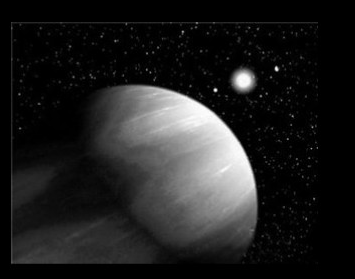
There are many ideas out there attempting to explain why the orbit of Drac is so unlike almost all others. One of the most interesting prospects is that it might not have formed together with our solar system at all—otherwise it would orbit in the same direction as everything else. It is entirely possible that the comet could have gotten trapped in our solar system from interstellar space, providing us with an unprecedented amount of information about the cosmos.
有许多学说都尝试解释为什么德库拉的公转方式如此与众不同。其中最有趣的一个设想是德库拉可能根本就不是随着太阳系而形成的,否则它的运行方向应该和其他卫星一样。这颗彗星完全有可能是突然"闯进来"的,这能给我们带来大量关于宇宙的信息。
4.Triton
4.特里同
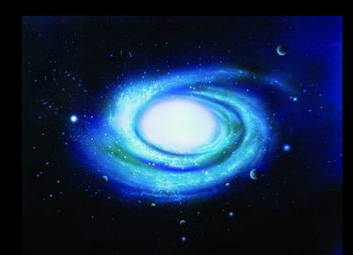
While it isn't a household name, some of you have probably heard of Triton before. But hear us out—there is more than meets the eye with this fantastic specimen. Comprising more than 99 percent of all the mass known to orbit Neptune, it's as if all the gas giant's awe was condensed into one moon. As shown by the Voyager 2 probe in 1989, Triton is rare among known moons in that it is geologically active: Volcanoes pepper the surface, but they do not spew ash and lava when they erupt, like those on Earth. Instead, they spew water and ammonia.
虽然特里同并不是个家喻户晓的名字,但还是有人听过它的。您请稍安勿躁,听我们说完,这个梦幻般的星球绝不仅仅是只能满足视觉感受这样简单。特里同一个星体的质量就占据了海王星所有卫星质量总和的99%以上,仿佛所有能在气体巨星上看到的壮观景象都聚集在一颗卫星上。1989年"航行者2号"发回的探测数据显示,特里同和其他已知卫星不一样,虽然它也是遍地火山 ,但喷发的是水和氨而不是火山灰和熔岩。
Being just a bit smaller than our own Moon, Triton is the only large moon in the solar system to orbit backward. Also, being one of the largest known moons in our solar system—larger than Pluto—it has just enough gravity to support a thin atmosphere. Seriously thin. With surface air pressure 50,000 times lower than that of Earth, you couldn't fly a kite on Triton's surface. Yet, incredibly, Voyager 2 photographed clouds flying just a few kilometers above the surface.Finally, Triton is one of the most reflective objects known to science, reflecting 60–95 percent of all light that hits it. To put that into perspective, the Moon—which is able to cast shadows on Earth at night—reflects only 11 percent.
特里同仅比我们的卫星(月亮)小一点,是太阳系中唯一一颗与主星旋转方向相反的大卫星。此外,作为太阳系中已知的大卫星(大于冥王星),它有足够的重力来支撑稀薄的大气层——真的非常薄。特里同的表面气压是地球气压的1/50000,你根本无法在那里放风筝。但不可思议的是,旅行者2号还是拍摄到了在它地表几千米之上的云层。最后,特里同是科学界公认的反射能力最强的天体之一,反射率约为60%~95%。为了正确理解这一概念,我们以月球为例说明,月球的反射率只有11%。
3.Saturn's Extra Ring
3.土星巨型外环
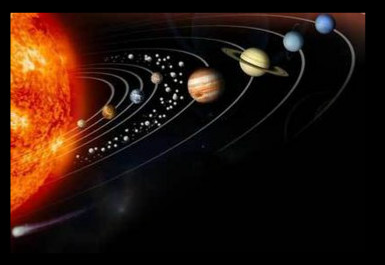
We've mentioned Saturn a few times so far, but it is certainly an incredibly interesting place. While the planet is known for its staggering ring system, only recently did we find out just how far it extended out into space. In 2009, we discovered an enormous ring around Saturn, the farthest and largest band around the ringed world. The ring is tilted 27 degrees from the main rings and starts roughly 128 times the planet's radius from its surface, extending to 207 times its radius into space. It is so diffuse that it can only be detected in infrared, but it may be the reason behind the two-toned moon, Iapetus.
我们已多次提到土星,因为它真的是一个非常有趣的地方。虽然我们早已对这个星球惊人的外环系统有所了解,可最近才发现这个环向太空延伸得有多远。2009年,我们发现了土星的巨大外环,它是宇宙中已知最大的、延伸得最远的环,该环与主环成27度,分布在距土星表面128倍半径到207倍半径之间。虽然它如此弥散,只能被红外线检测到,但它很可能是双色卫星——伊阿珀托斯形成的原因。
Saturn's moon Phoebe orbits within the ring and at the same inclination, so it is very likely that it is the culprit. Dust disperses from Phoebe and falls onto the larger Iapetus, which orbits on the edge of this colossal new ring. Every time Iapetus passes through it, matter collects on its equator. After hundreds of thousands of years, this matter seems to have built up, creating the moon's striking appearance. Now it is just a question of whether it is black with white stripes or white with black stripes.
土星的菲比卫星的运行轨道也在该环内,并且倾斜角度也相同,所以它很可能也是伊阿珀托斯呈现双色的另一个原因。宇宙尘埃从菲比卫星散射出来并落到更大的伊阿珀托斯星周围。而伊阿珀托斯在这巨大新环的边缘运转,每次伊阿珀托斯经过菲比卫星,这些物质就在伊阿珀托斯的赤道上不断积累。经过成千上万年,这些堆积的物质创造了壮观的外环。现在的问题是,它到底是黑色参杂白色条纹还是白色参杂黑色条纹呢?。
2.Siamese Moons
2.暹罗双星
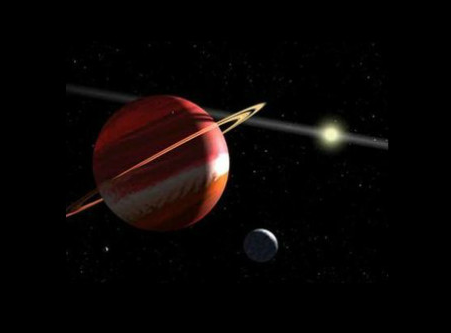
The moons Janus and Epimetheus are known as the "Siamese moons," because they share the same orbit and are separated by only 50 kilometers (31 mi)—that's less than the radius of the moons themselves. Because of this, they are locked in a gravitational tango that causes them to literally swap places every four years. Due to their complex relationship, they will never crash into each other.
雅努斯和厄庇墨透斯是人们熟知的"暹罗双星",它们在同一轨道上运行而且仅仅相隔50千米(31英里)——这距离比它们本身的半径还要短。它们复杂的关系使它们永远不可能互撞,也正因为如此,它们才能在重力影响下每四年跳一次探戈,交换一次位置。
Originally, scientists were puzzled as to why data did not match their expectations of the moon they had named "Janus." In 1978, 12 years after the discovery of their common orbit, we realized that what we had called Janus was actually two separate moons. This was confirmed by the Voyager flyby in 1980. Interestingly, a faint ring of dust is present in the region of their orbits. This suggests that the two moons were once a single larger one that has since broken up, leaving behind trace amounts of rubble.
起初,科学家们很困惑为何他们所测出的数据和它们所取的名字并不契合,"Janus"在古罗马语里是双面神的意思。而在1978年,也就是发现两星共行同一轨道的12年后,我们发现这并不是"双面",而是"双星",这也在1980年被"航行者号"近地探测所证实。有趣的是,该轨道上有一层淡淡的灰尘,这意味着这两个卫星原本是合体的一个大卫星,分裂后留下了大量的碎片。
1.Cruithne
1.克鲁坦
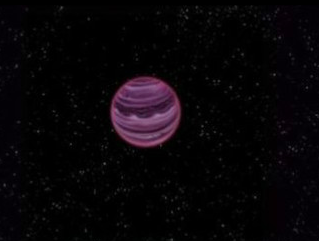
After taking a look at stuff way out there in our solar system, let's head home to Earth and discuss the largely disputed matter of our planet's second moon. Since 1846, astronomers have been searching for a second moon of Earth. Frederic Petit was the first to claim he had found one. He proposed that it orbited Earth in less than three hours at just 11 kilometers (7 mi) above our planet's surface. Ever since, many other astronomers have claimed to find a second moon—but to no avail. However, there is one weird exception.
让我们把目光从太阳系别的天体上稍稍收回来,重返地球家园来讨论一下我们饱受争议的第二卫星(第一卫星是月亮)。从1846年以来,天文学家就着力寻找地球的第二个卫星。弗雷德里克是第一个声称自己找到第二卫星的人。他认为这颗卫星围绕地球运行,运行周期不足三小时,距离地球表面最近距离为11千米(7英里)。从那以后,很多天文学家也都声称自己发现了第二卫星——但都是徒劳的。不过,也有一个例外。
Cruithne is an alien asteroid that orbits the Sun in 364 days, with perfect resonance to that of Earth. This means that, for a short time every year, the 5-kilometer (3 mi) asteroid is part of the Earth system. It reaches its closest point to Earth every November. Technically, it does not count as a moon, since it leaves Earth. But it's still nice to think that every year, an alien object comes to visit.
克鲁坦是一颗外来小行星,绕太阳公转周期为364天,与地球有着完美的共振。这意味着,在每年的一段短暂的时间里,这颗5千米(3英里)的小行星是地球系统的一部分。每年11月它和地球距离最近。确切来说,既然它能离开地球,那么它就不能被看作是地球的卫星。但是想想每年都有一个外来物体光临地球。这也是一件很美好的事情。
审校:哈利 来源:前十网


